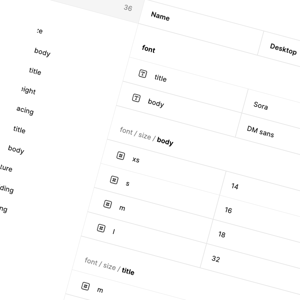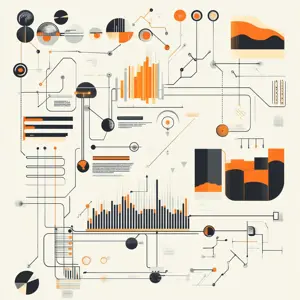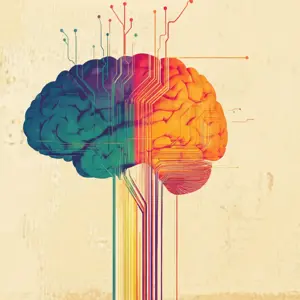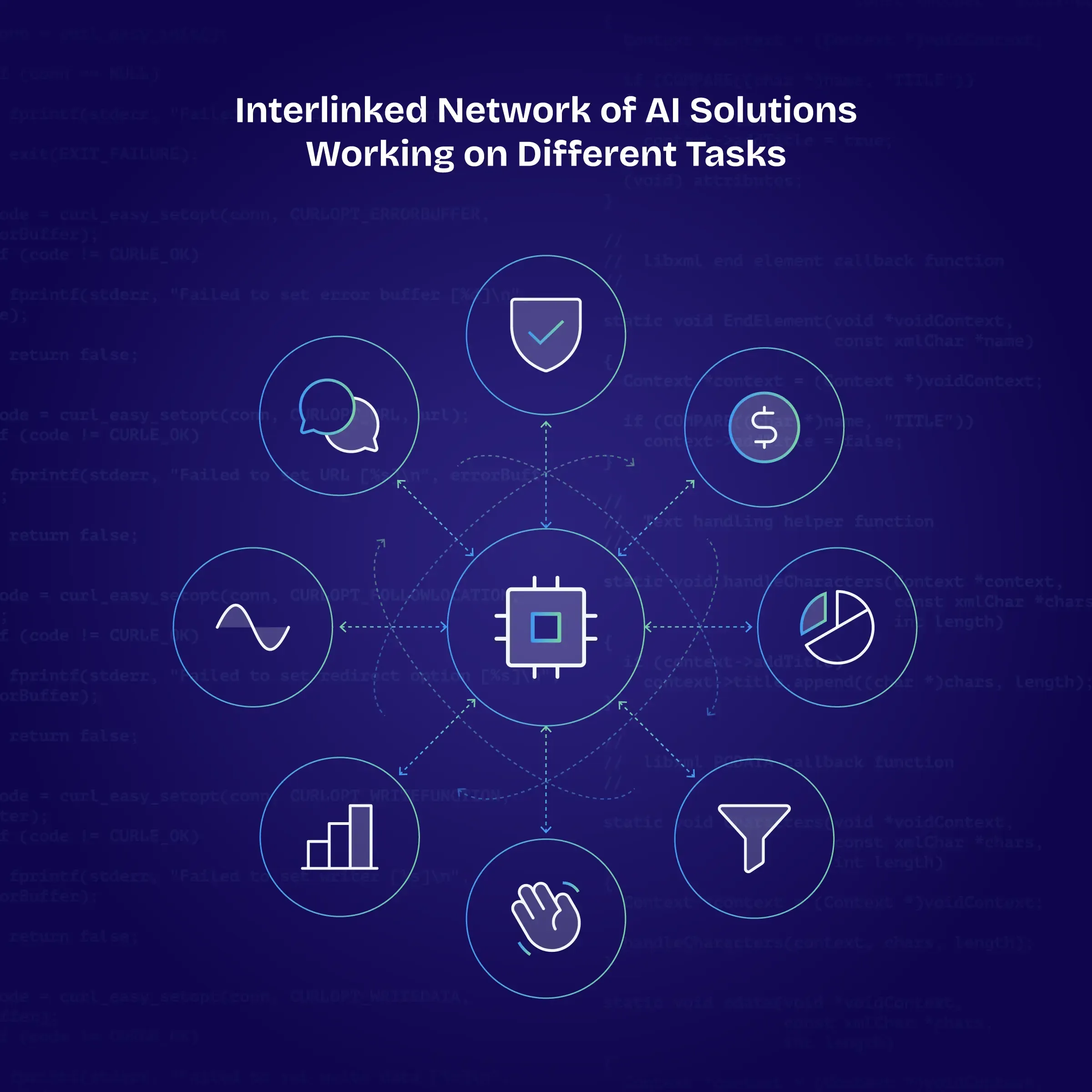
At the heart of agentic AI is the idea of agency, i.e., working independently, making decisions, and solving problems with minimal assistance. With this in mind, we've got to think about what we're actually creating with this type of AI development.
Copilot-style helpers are already commonplace. The next step is a cohort of semi-autonomous colleagues that can plan, delegate and, within defined limits, act without supervision. Deployed en masse in a multi-agent network, these artificial intelligence solutions work together, coordinating operations and forming the building blocks of the AI workforce.
But how do we get to this AI workforce? How do we go from single, goal-focused agents to a unified network of autonomous colleagues? And what does this mean for your org chart?
Agentic Artificial Intelligence today: Piloting single AI agents
AI research has already reached the proof-of-concept stage for agentic systems. While most enterprise deployments remain pilot projects, they do give us an idea of what agentic AI truly is. At a fundamental level, these AI agents operate according to the same basic operational structure:
- They gather and process information.
- They work autonomously to develop strategic plans based on this information.
- They take the initiative to act, either with or without human input, depending on their calibration and permission.
When applied to different disciplines and sectors, however, their operation becomes much more versatile and wide-ranging.
Marketing agents can assess existing campaigns, develop optimised plans, and then implement these plans using integrations with operational tools. Supply chain agents achieve complex capacity analysis swiftly and then optimise processes through intelligent decision-making. For instance, an internal May 2025 pilot at a FTSE 100 retailer reportedly cut warehouse idle time by 12 percent in four weeks.
In finance, smart agents execute fraud prevention measures by cross-referencing vast datasets against known threat profiles.
Already, these solutions are going beyond the remit of AI-based advisors and assistants. As a business owner in 2025, you have the capability to deploy artificially intelligent agents within your organisation, benefiting from their streamlined, autonomous decision-making. The next phase is deploying multiple agents across the business, and then pulling all this together for maximum advantage.
Developing AI science: Multi-agent deployments
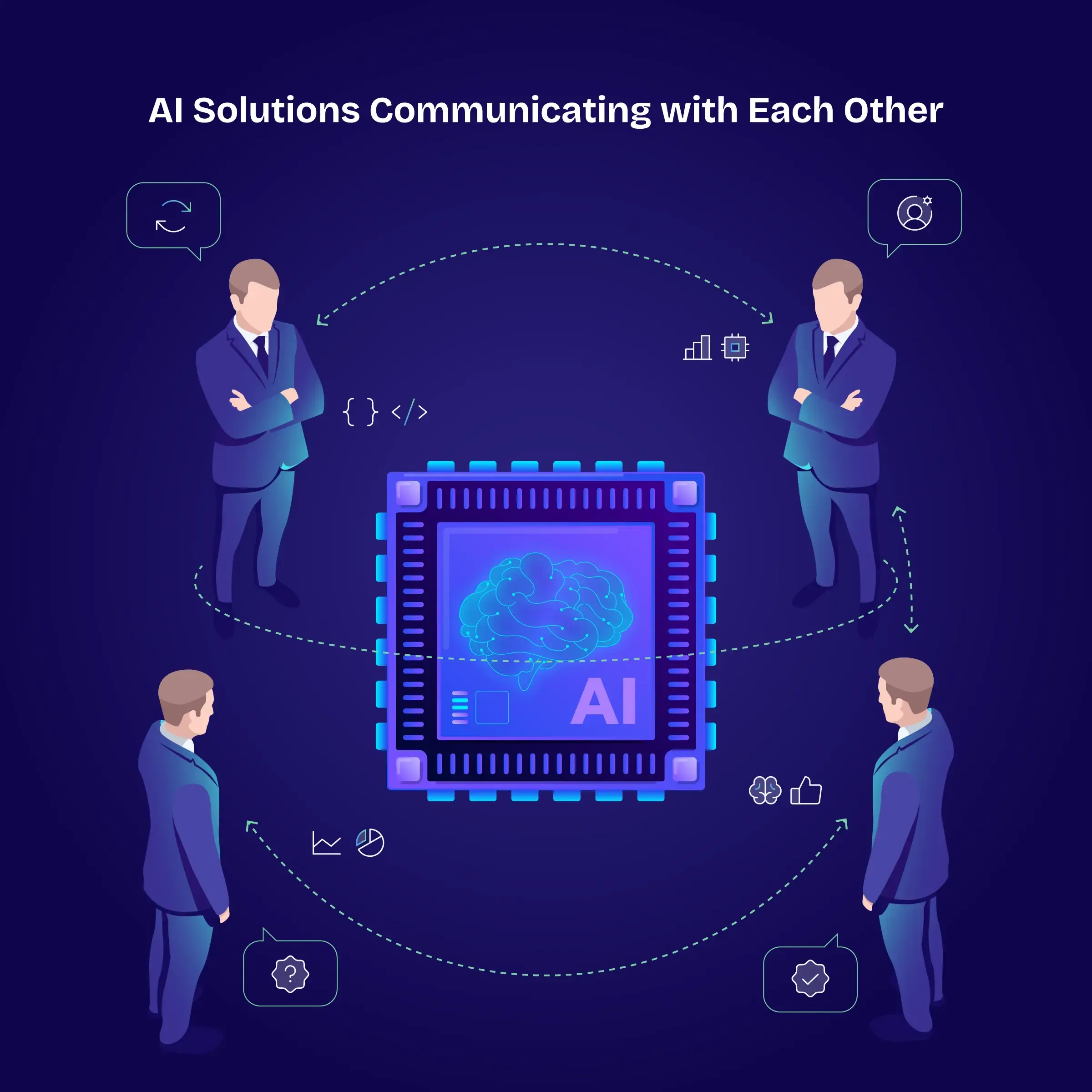
AI science is developing at a rapid pace, but one of the most important areas of evolution is in communication. Here, though, we are not focusing on how generative AI solutions communicate with human users, although this remains important. Instead, we're talking about how agentic AI solutions communicate with each other.
To achieve effective multi-agent deployments, business stakeholders need to consider the following. This is not a complete list of steps in multi-agent AI deployment, but it does give you an idea of the core milestones on the way.
Understanding the capability of individual agents
By definition, the multi-agent system is comprised of individual agents. It's important to have a foundation of understanding about what each of these agents is doing and what it is capable of. This helps you map out current strengths and weaknesses.
Deciding how these agents need to work together
With any technological development, there is a tendency to follow the herd, adopting tech simply because others do. To really benefit from multi-agent deployment, you need to avoid this, instead considering your aims and objectives from collaborative solutions. Define what goals you want to achieve and how you expect agent communication to deliver this.
This may involve interdepartmental collaboration, for example, procurement AI agents working closely with client-facing service agents within a broader supply chain. Or it might involve the unification of specific capabilities, like generative AI and speech processing AI coming together to support the customer, while image recognition AI identifies relevant products and carries out quality control actions.
Building the communicative architecture
Multi-agent deployment can be structured in different ways. The system may be centralised, with a command centre that orchestrates agent activities. Popular open-source orchestrators in 2025 include LangGraph, AutoGen, and CrewAI, each supporting different routing patterns.
Or it may be decentralised, with agents operating according to a more democratic process. Alternatively, it could be a mixture of the two. The decentralised system offers more flexibility and autonomy for individual agents.
Developing communicative protocols
Across all the architectural structures discussed above, communication protocols are crucial. These are the pathways down which information will flow, and the multi-agent AI workforce depends on this. Open protocols such as Google's Agent2Agent are emerging, allowing agents built on different stacks to exchange messages securely. The accessibility of inter-agent communication solutions is democratising multi-agent deployment, putting the AI workforce within the grasp of more business stakeholders.
Governance checkpoints for an AI workforce
For agentic AI to be truly effective and also sustainable, governance is necessary. But what does this governance look like? Here are some key checkpoints for governance of the AI workforce.
Regulatory alignment
Regulatory frameworks provide guidance and control in governance. AI workforce adopters must ensure compliance with the EU AI Act risk-tiering (first provisions effective 2 February 2025) and the UK's voluntary AI Code of Practice (published February 2025).
Orchestration layers
Orchestration models are intrinsic to the operation of multi-agent AI. This orchestration layer needs to be monitored and assessed on an ongoing basis, ensuring that the right model is applied for optimal results. Each individual AI agent needs to be able to fulfil its own role while also supporting the work of other agents.
Knowledge sharing
How are autonomous agents sharing knowledge with one another, and does this adhere to data protection regulations? Information transfer pipelines can be vulnerable to attack and data theft and will need to be secured.
Degrees of autonomy
Permissions are a huge part of the AI workforce. Boundaries need to be established, defining the scope of AI decision-making and autonomous action. In some cases, autonomous action is great because it streamlines the entire process. But this needs to be managed carefully.
Impact reports
Business stakeholders need to understand the impact of multi-agent deployments. Among the key impacts of multi-agent deployment are material changes to role definitions, encouraging a shift towards AI-augmented positions rather than outright replacement. These impacts must be measured and analysed so that training and reorganisation can get the best out of human personnel and AI agents side by side.
Human guardrails
Human personnel will be required to provide ongoing assessment of multi-agent results, implementing the necessary guardrails and parameters to keep the AI workforce on track. This is an important layer of governance for the AI workforce as it develops, and it also provides a valuable feedback loop that helps agentic solutions learn.
Get ready for the next phase of multi-agent AI
To move forward into the next phase of agentic AI, business stakeholders need to be fully prepared. This means understanding current capabilities, goals, orchestration models, and communication protocols.
Arrange a pipeline audit or technology gap analysis to assess model-evaluation metrics, projected operating costs per agent and a staff up-skilling plan before you scale multi-agent AI across the organisation.










